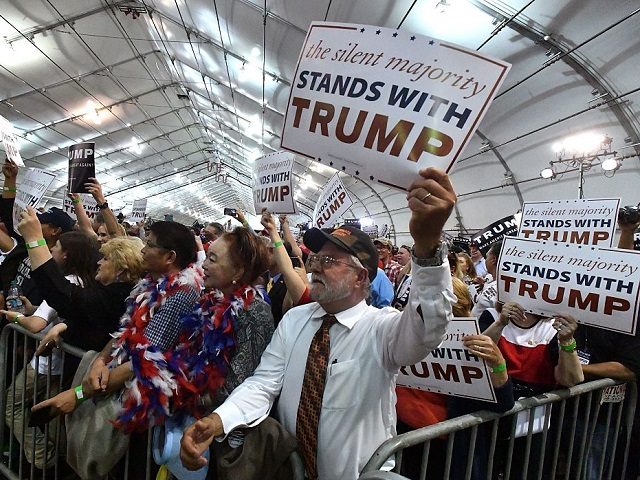The California Democratic Party believes it will pick up a legislative super-majority that would allow them to raise taxes despite Republican opposition, but it may find itself blindsided by Trump “stealth voters” who clandestinely support his policies.
Democrats have had the majority in both the California Assembly and the Senate for the last 46 years, except for the Assembly in 1995-1996. That has given them the ability to create California’s laws and craft budgets. But because the California Constitution requires a two-thirds super-majority of both houses of the legislature to raise taxes — even though it only takes a majority vote to spend those dollars on anything the majority party wants — Republicans have maintained relevance.
For the first time in more than a century, Democrats won a supermajority in both houses of the California legislature in 2012. But high-profile corruption scandals cost them that supermajority by early 2014.
The 2014 California coattails from Democrat Jerry Brown’s victory over Republican challenger Neel Kashkari by 60 to 40 percent paved the way for Democrats to a sweep all eight statewide offices. But facing low overall voter turnout, and with an effective ground game, Republicans picked up two Senate and two Assembly seats in the November contests to deny Democrats their supermajority control after 2014.
With Hillary Clinton swamping Republican Donald Trump by 8 points following the 2016 Democratic National Convention, party insiders looked for a 2016 mandate to restore Democrats supermajority control in the California legislature.
Republican political consultant Mike Madrid told Capitol Public Radio in mid-August, when Trump was still far down in the national polls, that an unpopular standard-bearer does not usually hurt Republicans in the down-ballot California Assembly and Senate races. He creditsedolder and more engaged Republican voters as having more consistent voting patterns than Democrats, who need to be motivated to show up and vote.
Despite a big Democratic Party registration drive and television advertising barrages by both Hillary Clinton and U.S. Senator Bernie Sanders (I-VT) leading up to the June 2016 California primary, low Democratic turnout resulted in vote totals that just barely beat the 47.5 percent turnout in California’s 1992 primary, adding up to the lowest participation rate of the last four presidential primaries without an incumbent president running.
The main focus of the California Democrats’ 2016 election efforts will be in the Senate, where they need just one more vote to achieve a two-thirds majority. But only 1 of the 6 Senate seats vacated by term limits is now held by a Republican, GOP floor leader Bob Huff (R-San Dimas), who is running a strong campaign for the Los Angeles County Board of Supervisors.
Republican leaders recruited first-term Assemblywoman Ling-Ling Chang (R-Diamond Bar) to try to hold the 29th Senate District, which has a strong Republican tilt in voter registration. Democrats recruited former Irvine Mayor Sukhee Kang, who only recently moved into the district.
Four of the others in termed-out districts appear to be “safe” Democrat seats. The only potential uncertainty is supposed to be the 27th Senate District in Los Angeles and Ventura counties, now represented by Democrat Fran Pavley (D-Agoura Hills).
But the wildcard in the state elections is Donald Trump, who is running an extremely unconventional national campaign that has rocketed him back into a 1-point lead in the August 28 Reuters/IPSOS poll. Even more remarkable, Trump has also wiped out a supposedly “insurmountable” August 21 edge for Clinton among likely voters, and now leads her by 2 points in the first post-Labor Day poll by CNN/ORC.
Psychology Today took the extraordinary step of suggesting that the November 2016 election may reveal a huge number of “stealth” voters” who have been “publicly claiming to be “undecided,” yet fully plan to turn out and vote for an unpopular (in some circles) or controversial candidate — in this case, Donald Trump.”
Clandestine Trump voters were detected earlier in the presidential campaign, when it was determined Trump polled higher in online polls than polls conducted over the phone, where voters engage in live human interaction. Psychology Today believes the polling discrepancy is fueled by voters that support Trump’s policies, but are concerned about the “social desirability” of admitting it to others.
If the “stealth voters” show up in California for Trump, it could have a huge disruptive impact on down-ballot California Senate and Assembly races, where many Democrats may be over-confident they are currently winning.

COMMENTS
Please let us know if you're having issues with commenting.